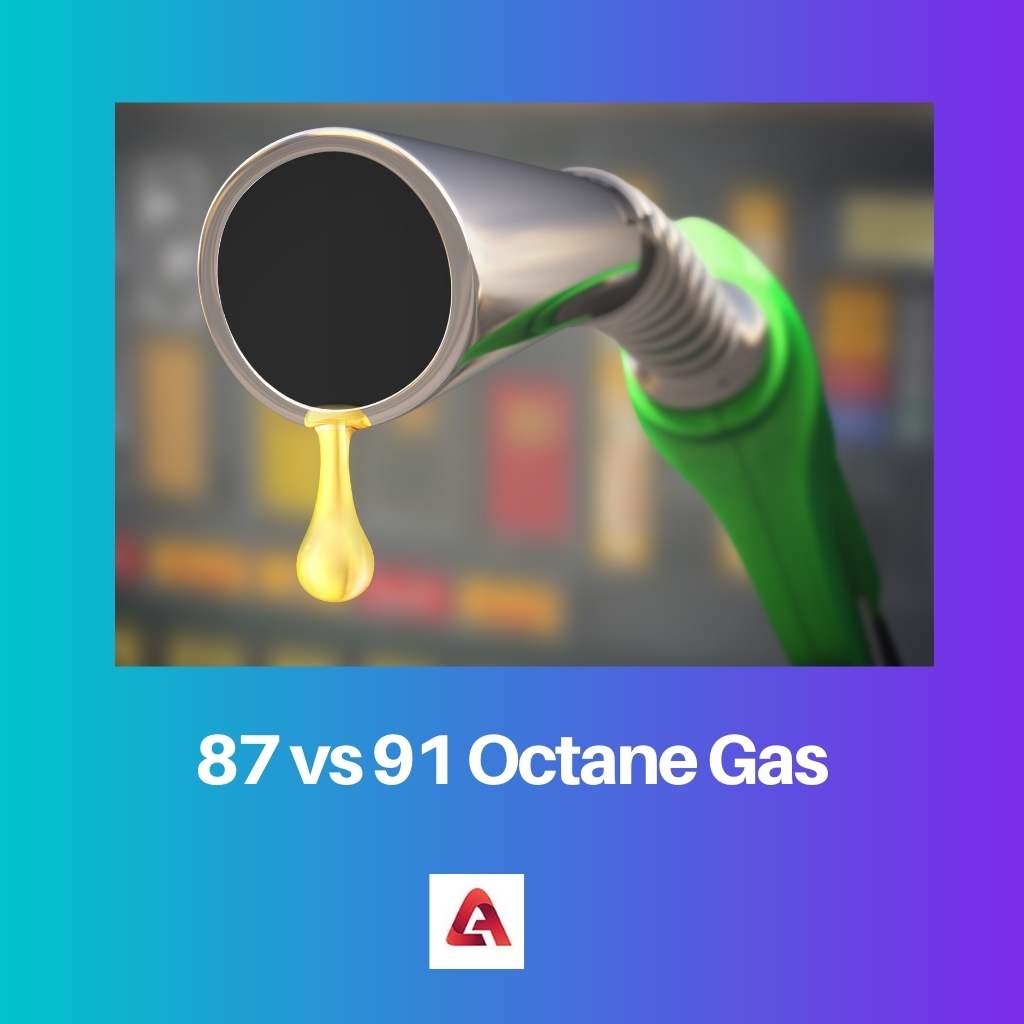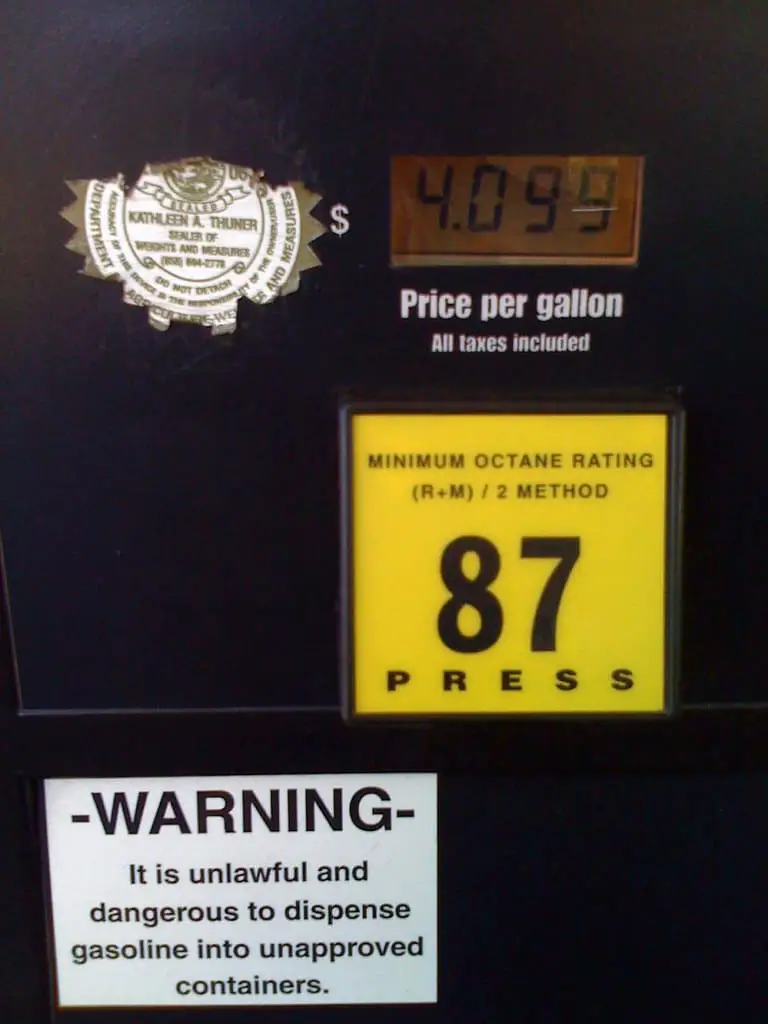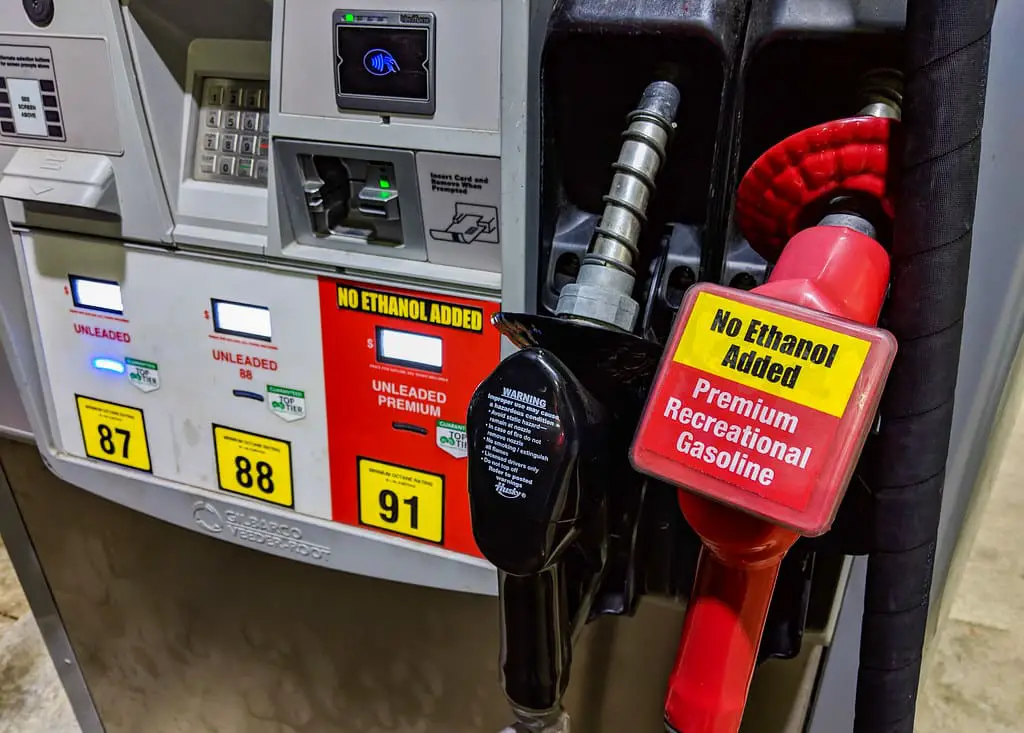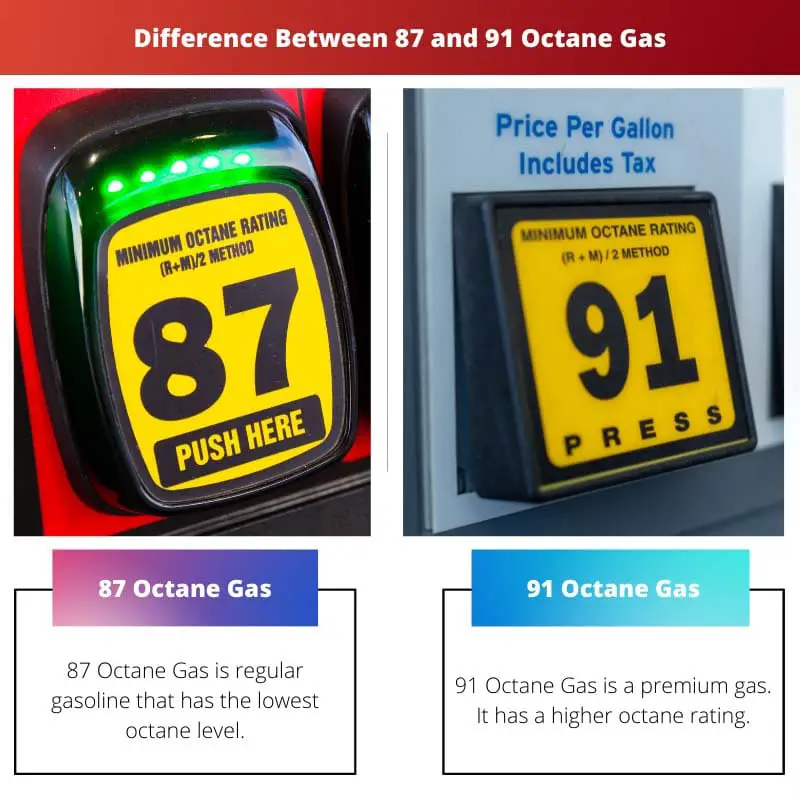Gasoline or Petrol is a flammable liquid that is a transparent liquid derived from petroleum and is used as a fuel in an internal combustion engine.
Various types of organic compounds are enhanced with different kinds of additives and go through the p[rocess of fractional distillation of petroleum.
Gasoline can sometimes leak into the environment either in the form of a vapour or in liquid. Octane number is given to the various kinds of fuel which can withstand the compression in the internal combustion engine.
Key Takeaways
- 87 octane gas is a lower-octane fuel, suitable for most standard car engines and more affordable.
- 91 octane gas is a higher-octane fuel designed for high-performance vehicles and provides better engine efficiency.
- Using the appropriate octane level for your vehicle is crucial to maintain engine performance and preventing damage.
87 vs 91 Octane Gas
87 octane gas has an octane rating of 87 and is known as regular unleaded gasoline. 91 octane gas has an octane rating of 91, known as premium unleaded gasoline, and is suitable for vehicles with high-performance engines that require higher compression ratios to achieve maximum power output.

87 Octane Gas is regular gasoline that has the lowest octane level. The additive is added to the 87-octane gas so that it can become more resistant before it detonates.
Regular gasoline is a normal fuel, and it is cost-effective. The efficiency of 87 octanes is very much lower compared to mid-term and premium gasoline.
It is more prone to detonation because 87-octane gas can ignite at a lower temperature than other gasoline. The amount of power given by the regular gas is less.
It also has more knocking and pinging than 91-octane gas.
91 Octane Gas is a premium gas. It has a higher octane rating. This type of octane is better than Regular and midgrade gasoline.
It consists of 91% of iso-octane and 9% of n-heptane. The higher the number of iso-octane, the more anti-knocking tendency will increase.
If the number of iso-octane is more, then the compression ratio will increase. So the chances of knocking will decrease. It has a higher ignition and combustion rate.
It is more fine and unleaded. It doesn’t detonate easily as more than 87 octanes can compress it.
Comparison Table
| Parameters of Comparison | 87 Octane Gas | 91 Octane Gas |
|---|---|---|
| Octane Rating | Low | High |
| Price | Cost-effective | Costly |
| Ignition | Knocking | Better and higher capability |
| Burning | Faster | Slower |
| Compression | Lower | Higher |
| Properties | 87% iso-octane & 13% n-heptane | 91% iso-octane & 9% n-heptane |
| Efficiency | Low | High |
What is 87 Octane Gas?
Octane Number or rating is given to the different types of fuel, and it is used as a standard measure to withstand the compression in the high-pressure in an internal combustion engine before it detonates.
87 Octane is a Regular gas. It is the most common type of gasoline that is used worldwide. This is also used as a Research Octane Number (RON).
Regular gas is called that gas that is normal and given a rating of 87.
87 Octane has a regular performance and low efficiency than 91 octanes. If the octane rating is lower, then there will be pre-detonation.
If it detonates easily, then the chances are that it can harm the performance of the vehicle. The amount of power given by 87 octanes is less than 91 octane.
It cannot be compressed too much, like 91. Otherwise, it will get leaked.
It all depends upon the design of the engine and which Octane gas is good for your vehicle.
The properties of 87 octanes include 87% of iso-octane and 13% of n-heptane. Octane means that it is a colourless gas with the smell of gasoline.
It is less dense than the water. Additives are also added to 87 Octane to make it more gas resistant.
This process is commonly called pinging or knocking.

What is 91 Octane Gas?
An octane testing engine measures octane. Octanes are formed by combining heptane and iso-octane.
91 Octane gas consists of 91% of iso-octane and 9% n-heptane. Octanes are called Primary Reference Fuels.
Knocking properties are also checked in the testing engine. Additives are added in 91 octane gas to make it more resistive.
It has anti-knocking properties. It has the highest octane rating.
91 Octane Gas is categorised as the Premium fuel and considered the best.
It cannot be used in any vehicle. As it is premium gasoline, it has finer particles and is considered more clean and pure than the rest of the octane gases.
The price of 91 Octane Gas is higher. It is mostly used in sports cars or premium cars.
The capability of 91 Octane is better and higher than 87 Octane Gas. It can be compressed more and more than other octane gas.
Because of more compression, it gives more torque to the engine.
91 Octane has a higher ignition, and it burns slower. Its efficiency and the amount of power is also higher.
If a vehicle detonates more, it can change to 91 Octane gas. Changing fuel to 91 Octane gas doesn’t at all mean that your vehicle and its engine can start giving high performance automatically.
It all depends upon the design and the nature of the engine.

Main Differences Between 87 Octane and 91 Octane Gas
- 87 Octane Gas has a lower rating and is also called Regular Fuel. 91 Octane Gas has a higher octane rating and is also called Premium Fuel.
- 87 Octane is a cost-effective fuel. 91 Octane is costlier.
- 97 Octane has a lower ignition resulting in Pinging or Knocking. 91 Octane has better ignition and higher capability.
- 87 Octane burns faster. 91Octane burns slowly.
- The Compression rate of 87 Octane is lower. The compression rate of 91 Octane is higher.
- The properties of 87 Octane are 87% iso-octane & 13% n-heptane. The properties of 91 Octane are 91% iso-octane & 9% n-heptane.
- The efficiency of 87 Octane is lower. The efficiency of 91 Octane is higher.

- https://www.sciencedirect.com/science/article/pii/S0048969702002711
- https://www.tandfonline.com/doi/abs/10.1080/10916466.2015.1050506

Interesting comparison table. It would have been more helpful if more numerical data was presented instead of qualitative descriptions.
91 octane gasoline has an impressive set of properties, and is the most ideal in the market.
To my understanding, 91 Octane Gas is only suitable for high-performance vehicles and provides better engine efficiency. Using such gas on other vehicles may not be recommended.
It is important to clarify that the appropriate octane level for a vehicle is crucial and not interchangeable as suggested in the article. The choice of gas should be made according to the manufacturer’s guidelines.
87 Octane Gas despite being more affordable, has lower efficiency and may present some risks of pre-detonation.
Given the information provided, 91 Octane Gas seems like the better option overall, even with its higher cost. Perhaps the only downside is its price.